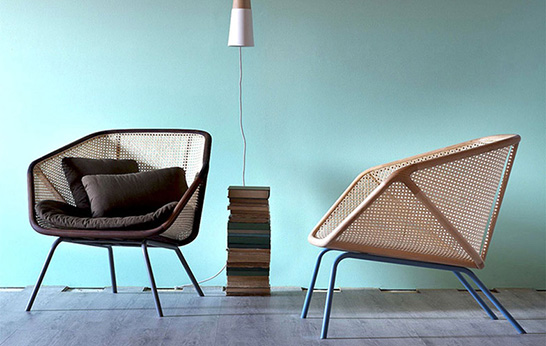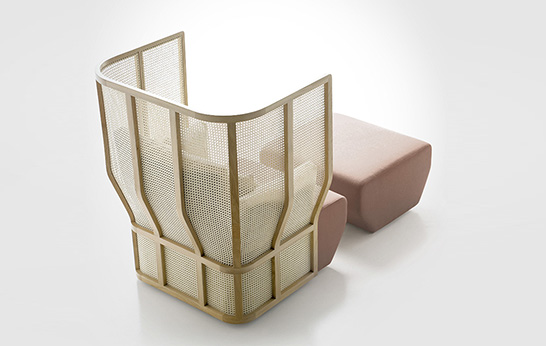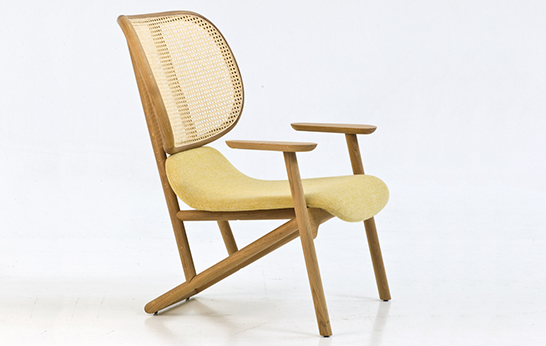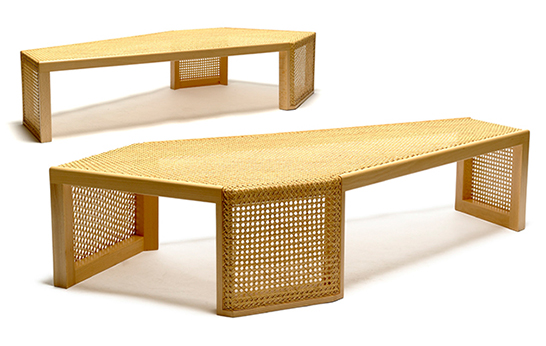Citizen Cane: Hospitality Trend
The traditional technique of caning – a weaving method that uses the peeled bark or skin of rattan vine - is making a comeback. The designers of these new lounge chairs and tables have each reinterpreted the familiar technique to create pieces that balance classic with contemporary.
Launched earlier this year at Maison & Objet, new French brand Bosc‘s Xistera series by Samuel Accoceberry with Jean Louis Iratzok is made using traditional caning techniques. The Xistera has a high, alcove-shaped back that provides a little privacy in open areas such as communal areas, waiting rooms and reception halls.
The cane seat of the Klara armchair by Patricia Urquiola for Moroso recalls the first mass produced furniture designs of the early 20th century. Klara’s simple form is crafted in the chair manufacturing district of Manzano in Italy, where caning has been practiced for more than a century.
Miguel Soeiro’s angular Low tables for Portuguese brans OWN play with transparency and layers. Designed for use as a part of a lounge area, the tables are made from a hard wood frame covered in classic caning.

Designed for Italian brand Miniforms, the Colony chair by Milanese studio Skrivo features a steam-bent beech frame and a woven cane seat. “Caning has always caught our eye,” say Skirvo. “From its origins in Southeast Asia to its introduction in Europe that ranges from French baroque to Austrian industrial age seating.”
This 20th century classic was designed in 1964 by Ward Bennet for Geiger International Furniture. One of the designer’s most famous pieces, the Landmark chair is carved from solid ash hardwood and is available with a solid upholstered or woven cane back.








Leave a Reply